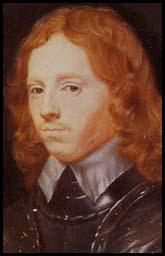Charles Fleetwood

Charles Fleetwood was born in Northampton in about 1618. Educated at Emmanuel College, Cambridge and Gray's Inn, and on the outbreak of the Civil War Fleetwood joined the the bodyguard of the Earl of Essex.
Fleetwood fought at Newbury (September, 1943) and commanded a cavalry regiment at Naseby (June, 1645). In 1646 he was elected to the House of Commons where he represented Marlborough. Fleetwood also played a prominent role at the battles at Dunbar (September, 1650) and Worcester (August, 1651).
In 1651 Fleetwood became a member of the Council of State and the following year married, Bridget Ireton, the daughter of Oliver Cromwell and the widow of Henry Ireton.
In 1654 Fleetwood became Commander in Chief in Ireland. He was recalled a year later after his brother-in-law, Henry Cromwell, claimed he was sympathetic to Anabaptists and Levellers in the army. He then became major-general in charge of the Eastern Counties. Fleetwood was unhappy with Cromwell's dictatorial methods and tried to persuade him not to dismiss Parliament in 1658.
In 1659 Fleetwood joined John Desborough and John Lambert to help remove Richard Cromwell as Lord Protector of the Commonwealth. He was appointed as Commander in Chief but was replaced by General George Monck in 1659.
When the monarchy was restored in 1660 Fleetwood was forced into retirement. As he had not been involved in the trial and execution of Charles I he was not imprisoned during the Restoration.
Charles Fleetwood lived in Stoke Newington until his death in 1692.
